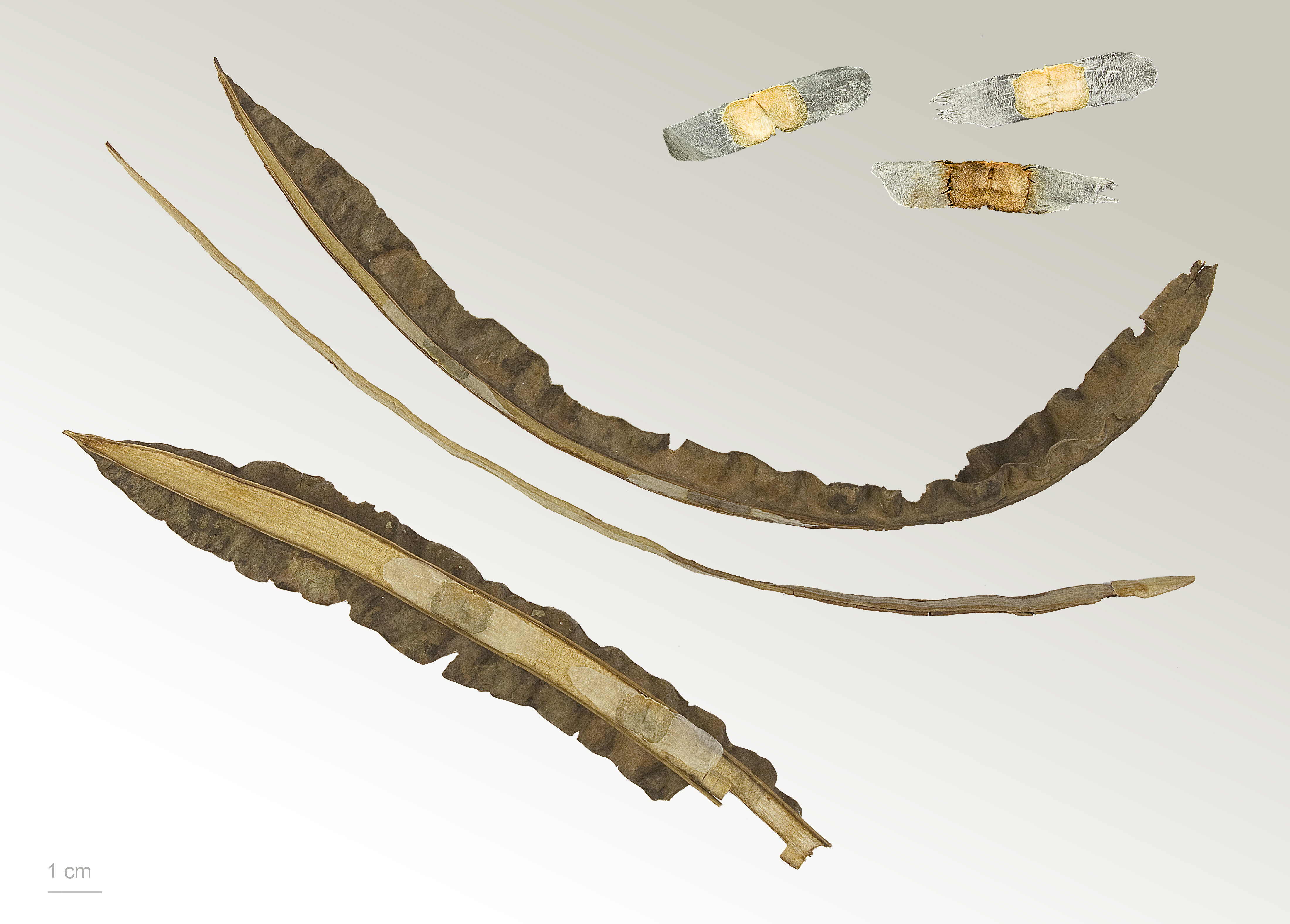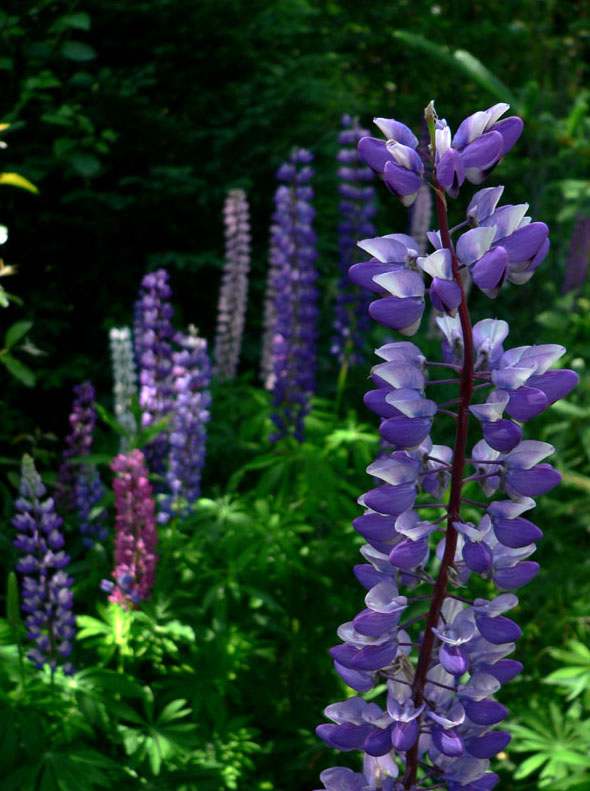|
Tabebuia
''Tabebuia'' is a genus of flowering plants in the Family (biology), family Bignoniaceae.Eberhard Fischer, Inge Theisen, and Lúcia G. Lohmann. 2004. "Bignoniaceae". pages 9-38. In: Klaus Kubitzki (editor) and Joachim W. Kadereit (volume editor). ''The Families and Genera of Vascular Plants'' volume VII. Springer-Verlag: Berlin; Heidelberg, Germany. ''Tabebuia'' consists almost entirely of trees, but a few are often large shrubs. A few species produce timber, but the genus is mostly known for those that are Gardening, cultivated as flowering trees.David J. Mabberley. 2008. ''Mabberley's Plant-Book'' third edition (2008). Cambridge University Press: UK. Etymology The genus name is derived from the Tupi people, Tupi words for "ant" and "wood", referring to the fact that many ''Tabebuia'' species have twigs with soft pith which forms hollows within which ants live, defending the trees from other herbivores. The ants are attracted to the plants by special extra-floral nectar glands ... [...More Info...] [...Related Items...] OR: [Wikipedia] [Google] [Baidu] |
Bignoniaceae
Bignoniaceae () is a Family (biology), family of flowering plants in the Order (biology), order Lamiales commonly known as the bignonias or trumpet vines.Vernon H. Heywood, Richard K. Brummitt, Ole Seberg, and Alastair Culham. ''Flowering Plant Families of the World''. Firefly Books: Ontario, Canada. (2007). . It is not known to which of the other families in the order it is most closely related.Peter F. Stevens (2001 onwards). "Bignoniaceae" At: Angiosperm Phylogeny Website. At: Botanical Databases At: Missouri Botanical Garden Website. (see ''External links'' below) Nearly all of the Bignoniaceae are woody plants, but a few are subwoody, either as vines or subshrubs. A few more are herbaceous plants of high-elevation Montane ecology, montane habitats, in three exclusively herbaceous genera: ''Tourrettia'', ''Argylia'', and ''Incarvillea''. The family includes many lianas, climbing by tendrils, by twining, or rarely, by aerial roots. The largest Tribe (biology), tribe in the fam ... [...More Info...] [...Related Items...] OR: [Wikipedia] [Google] [Baidu] |
Tabebuia Aurea
''Tabebuia aurea'' is a species of ''Tabebuia'' native to South America in Suriname, Brazil, eastern Bolivia, Peru, Paraguay, and northern Argentina. The common English name Caribbean trumpet tree is misleading, as it is not native to the Caribbean. It is also known as the silver trumpet tree,Kepler, Angela Kay (1990)''Trees of Hawai'i'', p. 7 Honolulu: University of Hawaii Press. . and tree of gold. Description It is a small dry season-deciduous tree growing to 8 m tall. The leaf, leaves are palmately compound, with five or seven leaflets, each leaflet 6–18 cm long, green with silvery scales both above and below. The flowers are bright yellow, up to 6.5 cm diameter, produced several together in a loose panicle. The fruit is a slender 10 cm long capsule (fruit), capsule.Huxley, A., ed. (1992). ''New RHS Dictionary of Gardening''. Macmillan . ;Cultivation It is a popular ornamental tree in subtropical and tropical regions, grown for its spectacular flower display ... [...More Info...] [...Related Items...] OR: [Wikipedia] [Google] [Baidu] |
Tabebuia Cassinoides
''Tabebuia cassinoides'' (Portuguese common name ''caixeta'') is a tree native to Central and South America. It is used as a timber tree to make pencil A pencil () is a writing or drawing implement with a solid pigment core in a protective casing that reduces the risk of core breakage and keeps it from marking the user's hand. Pencils create marks by physical abrasion, leaving a trail of ...s. References cassinoides Flora of Central America Flora of Southern America Flora of the Atlantic Forest Trees of Brazil Vulnerable flora of South America Plants described in 1845 Taxa named by Augustin Pyramus de Candolle {{tree-stub ... [...More Info...] [...Related Items...] OR: [Wikipedia] [Google] [Baidu] |
Adventive Species
An introduced species, alien species, exotic species, adventive species, immigrant species, foreign species, non-indigenous species, or non-native species is a species living outside its native distributional range, but which has arrived there by human activity, directly or indirectly, and either deliberately or accidentally. Non-native species can have various effects on the local ecosystem. Introduced species that become established and spread beyond the place of introduction are considered naturalized. The process of human-caused introduction is distinguished from biological colonization, in which species spread to new areas through "natural" (non-human) means such as storms and rafting. The Latin expression neobiota captures the characteristic that these species are ''new'' biota to their environment in terms of established biological network (e.g. food web) relationships. Neobiota can further be divided into neozoa (also: neozoons, sing. neozoon, i.e. animals) and neophy ... [...More Info...] [...Related Items...] OR: [Wikipedia] [Google] [Baidu] |
Naturalisation (biology)
Naturalisation (or naturalization) is the ecological phenomenon through which a species, taxon, or population of exotic (as opposed to native) origin integrates into a given ecosystem, becoming capable of reproducing and growing in it, and proceeds to disseminate spontaneously. In some instances, the presence of a species in a given ecosystem is so ancient that it cannot be presupposed whether it is native or introduced. Generally, any introduced species may (in the wild) either go extinct or naturalise in its new environment. Some populations do not sustain themselves reproductively, but exist because of continued influx from elsewhere. Such a non-sustaining population, or the individuals within it, are said to be adventive. Cultivated plants, sometimes called nativars, are a major source of adventive populations. Botany In botany, naturalisation is the situation in which an exogenous plant reproduces and disperses on its own in a new environment. For exampl ... [...More Info...] [...Related Items...] OR: [Wikipedia] [Google] [Baidu] |
Horticulture
Horticulture (from ) is the art and science of growing fruits, vegetables, flowers, trees, shrubs and ornamental plants. Horticulture is commonly associated with the more professional and technical aspects of plant cultivation on a smaller and more controlled scale than agronomy. There are various divisions of horticulture because plants are grown for a variety of purposes. These divisions include, but are not limited to: propagation, arboriculture, landscaping, floriculture and turf maintenance. For each of these, there are various professions, aspects, tools used and associated challenges -- each requiring highly specialized skills and knowledge on the part of the horticulturist. Typically, horticulture is characterized as the ornamental, small-scale and non-industrial cultivation of plants; horticulture is distinct from gardening by its emphasis on scientific methods, plant breeding, and technical cultivation practices, while gardening, even at a professional level, tends ... [...More Info...] [...Related Items...] OR: [Wikipedia] [Google] [Baidu] |
Systematic Botany
''Systematic Botany'' is a peer-reviewed scientific journal covering the study of systematic botany. It is published quarterly by the American Society of Plant Taxonomists. According to the ''Journal Citation Reports'', the journal has a 2010 impact factor of 1.897. ''Systematic Botany'' was established in spring 1976 under founding editor-in-chief William Louis Culberson (Duke University). The current editor-in-chief is James F. Smith (Boise State University). The American Society of Plant Taxonomists also publishes the peer-reviewed taxonomic monograph series, ''Systematic Botany Monographs'' since 1980. Abstracting and indexing ''Systematic Botany'' is abstracted and indexed in Agricola, Agris, BioOne, PubMed, Scirus, and Science Citation Index Expanded The Science Citation Index Expanded (SCIE) is a citation index owned by Clarivate and previously by Thomson Reuters. It was created by the Eugene Garfield at the Institute for Scientific Information, launched in 196 ... [...More Info...] [...Related Items...] OR: [Wikipedia] [Google] [Baidu] |
Indigenous (ecology)
In biogeography, a native species is indigenous to a given region or ecosystem if its presence in that region is the result of only local natural evolution (though often popularised as "with no human intervention") during history. The term is equivalent to the concept of indigenous or autochthonous species. A wild organism (as opposed to a domesticated organism) is known as an introduced species within the regions where it was anthropogenically introduced. If an introduced species causes substantial ecological, environmental, and/or economic damage, it may be regarded more specifically as an invasive species. A native species in a location is not necessarily also endemic to that location. Endemic species are ''exclusively'' found in a particular place. A native species may occur in areas other than the one under consideration. The terms endemic and native also do not imply that an organism necessarily first originated or evolved where it is currently found. Notion The notio ... [...More Info...] [...Related Items...] OR: [Wikipedia] [Google] [Baidu] |
Hispaniola
Hispaniola (, also ) is an island between Geography of Cuba, Cuba and Geography of Puerto Rico, Puerto Rico in the Greater Antilles of the Caribbean. Hispaniola is the most populous island in the West Indies, and the second-largest by List of Caribbean islands by area, land area, after Geography of Cuba, Cuba. The island is Dominican Republic–Haiti border, divided into two separate Sovereign state, sovereign countries: the Spanish-speaking Geography of the Dominican Republic, Dominican Republic () to the east and the French language, French and Haitian Creole–speaking Geography of Haiti, Haiti () to the west. The only other divided island in the Caribbean is Saint Martin (island), Saint Martin, which is shared between France () and the Kingdom of the Netherlands, Netherlands (). At the time of the European arrival of Christopher Columbus, Hispaniola was home to the Ciguayo language, Ciguayo, Macorix language, Macorix, and Taíno Indigenous peoples of the Caribbean, native pe ... [...More Info...] [...Related Items...] OR: [Wikipedia] [Google] [Baidu] |
Cuba
Cuba, officially the Republic of Cuba, is an island country, comprising the island of Cuba (largest island), Isla de la Juventud, and List of islands of Cuba, 4,195 islands, islets and cays surrounding the main island. It is located where the northern Caribbean Sea, Gulf of Mexico, and Atlantic Ocean meet. Cuba is located east of the Yucatán Peninsula (Mexico), south of both Florida and the Bahamas, west of Hispaniola (Haiti/Dominican Republic), and north of Jamaica and the Cayman Islands. Havana is the largest city and capital. Cuba is the List of countries and dependencies by population, third-most populous country in the Caribbean after Haiti and the Dominican Republic, with about 10 million inhabitants. It is the largest country in the Caribbean by area. The territory that is now Cuba was inhabited as early as the 4th millennium BC, with the Guanahatabey and Taino, Taíno peoples inhabiting the area at the time of Spanish colonization of the Americas, Spanish colonization ... [...More Info...] [...Related Items...] OR: [Wikipedia] [Google] [Baidu] |
Argentina
Argentina, officially the Argentine Republic, is a country in the southern half of South America. It covers an area of , making it the List of South American countries by area, second-largest country in South America after Brazil, the fourth-largest country in the Americas, and the List of countries and dependencies by area, eighth-largest country in the world. Argentina shares the bulk of the Southern Cone with Chile to the west, and is also bordered by Bolivia and Paraguay to the north, Brazil to the northeast, Uruguay and the South Atlantic Ocean to the east, and the Drake Passage to the south. Argentina is a Federation, federal state subdivided into twenty-three Provinces of Argentina, provinces, and one autonomous city, which is the federal capital and List of cities in Argentina by population, largest city of the nation, Buenos Aires. The provinces and the capital have their own constitutions, but exist under a Federalism, federal system. Argentina claims sovereignty ov ... [...More Info...] [...Related Items...] OR: [Wikipedia] [Google] [Baidu] |




